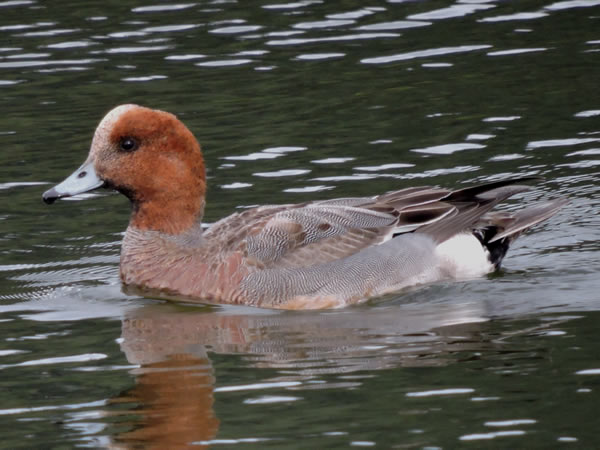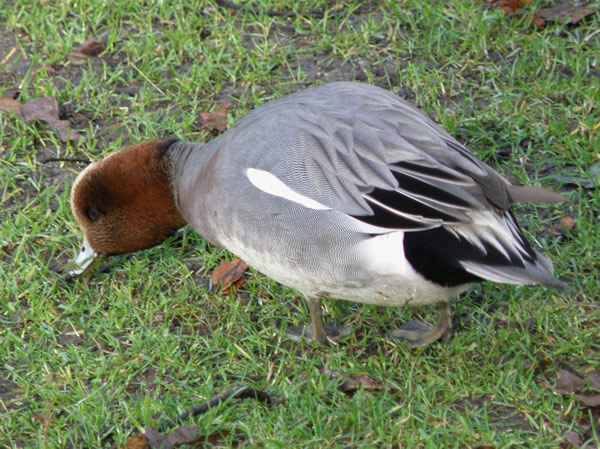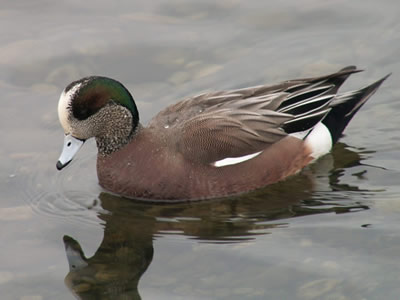| Dereila Nature Inn Home > Lagoon Trail > Bird Life Down at the Lagoon > Ducks: The Dabblers |
| S |
Ducks: The Dabblers |
|
Wherever there's water, be it the sea shore, a lake, a marsh, an inlet,
a
pond
or some wetlands there's probably
going to be a duck or two close by. |
|
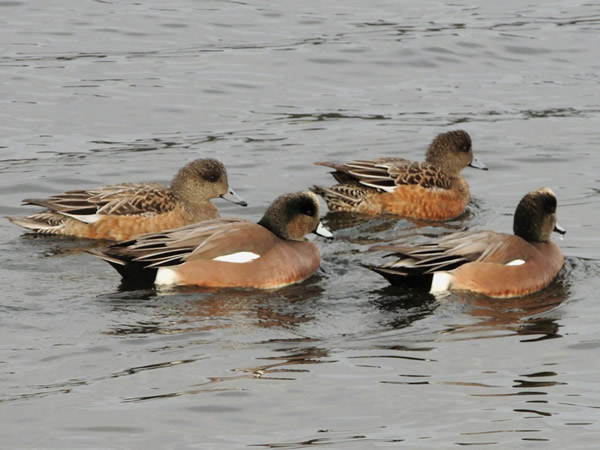 |
Ducks may come in many shapes, sizes and colours, but they fall into only two groups based on how they search for food: the dabblers and the divers. The dabblers include waterfowl like these American Wigeons, Mallards and Northern Pintails while the divers consist of scaups, goldeneyes and buffleheads. |
| |
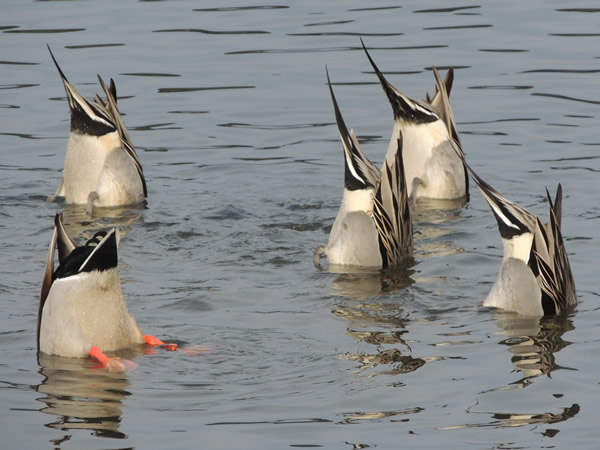 |
Although some dabblers are capable of diving for food, most of their feeding is done like these Northern Pintails. They simply tip their heads into the water and look for something to eat.
The best design for dabbling is to have legs near the centre of the body to act as a pivot. This structure makes it easy for dabblers to tip up to feed on the plants and organisms just under the water's surface. |
| |
 |
The Mallard, Anas platyrhynchos, is perhaps one of the most recognizable of all ducks. Because of its migration, it is found across North America, Asia and Europe and parts of Australasia at various times of the year. The male, or drake, is shown above with its bright iridescent green head and yellow bill.
|
| |
 |
Like many female ducks, the female mallard lacks the colourfulness of the males.
This ensures that she is not too too conspicuous when nesting. |
| |
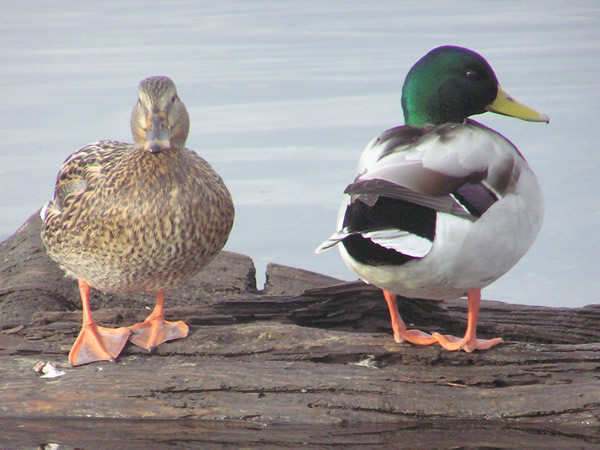 |
Dabblers are well adapted with their legs positioned to make tipping easy. |
| |
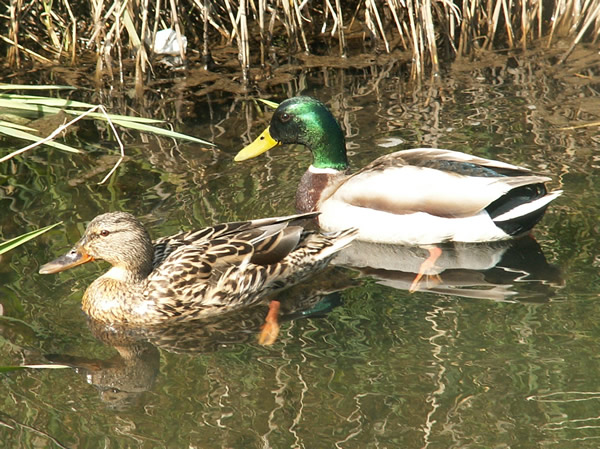 |
 |
The male Northern Pintail, Anas acuta, has distinctive brown, gray and white markings and a long tail. As its name suggests, it is found across the northern parts of North American, Europe and Asia. Most migrate south to over winter in the warmer parts but some from the prairies will migrate to the west coast and spend the winter months there. |
| |
 |
With their long tails, Northern Pintails are fairly large ducks (64-76 cm/25-30 in long). The female, shown above, is much shorter as she lacks the long tail. |
| | |
 |
With their wide, spatula-shaped bills, Northern Shovelers, Anas clypeata, are very distinctive. The colourful male is above and the female is below. |
| | |
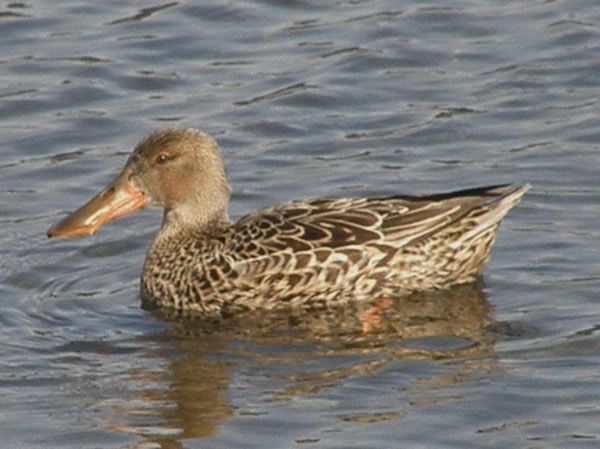 |
These ducks prefer shallow water and use their bills to scoop up mud and strain out small invertebrates. Like Mallards, Northern Shovelers migrate great distances and can be found throughout the Northern Hemisphere at various times of the year. |
|
|
The Eurasian Wigeon, Anas penelope, is another member of the Dabblers. The are only three living species of Wigeons - all characterized by a steep forehead and somewhat large, rounded head. As the name suggests, this duck hails from Europe and Asia, but is sometimes found along the coasts of North America. |
|
|
The Eurasian Wigeon is quite happy outside of the water and is very adept at munching on short grasses. |
|
|
The American Wigeon, Anas americana, is much more common and found across North America. It is a vegetarian dabbler and enjoys marshes and wetlands with tall vegetation in which it can hide, since it's quite a wary duck and easily frightened. When not dabbling it will graze on the shore or in fields eating stems, grass and leaves. |
| |
|
|
 |
_ |
|
American Wigeons nest on the ground near water, often on islands. They are also noted for stealing grasses and plants from diving ducks. The female is shown here on the left, and the male with its characterized white markings and dark eye patch is on the right. |
| |
|
|
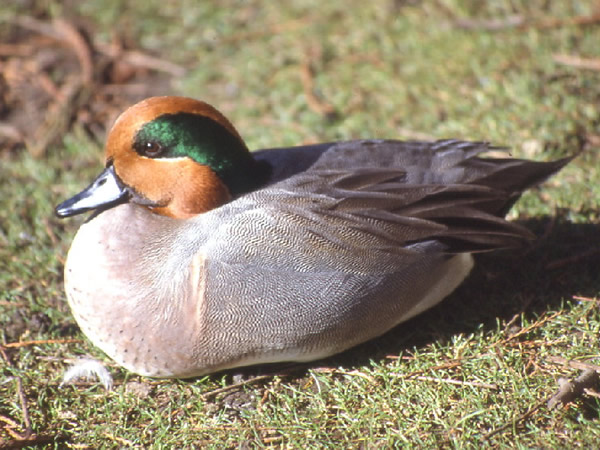 |
The male Green-winged Teal, Anas creeca, is another beautifully marked dabbling duck, with its reddish-brown head, green eye stripe and spotted breast. It is the smallest of North America's dabblers, but is a fast flier capable of 70 km/h (40 mph). |
| |
 |
On the calm water, the Green-winged Teal is truly a stunning bird. |
| | |
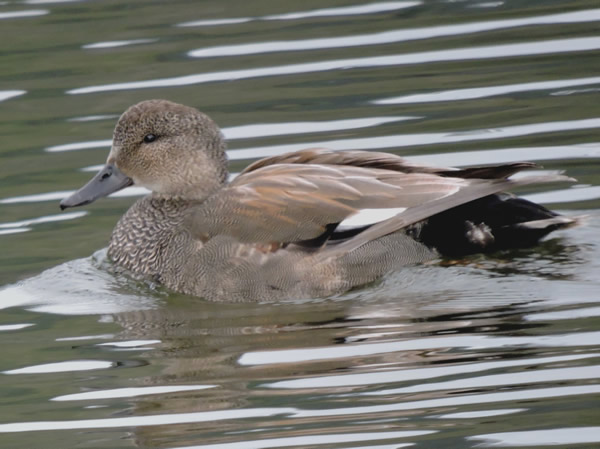 |
Male Gadwalls, Anas strepera, lack the colourful plumage that most male ducks have but is still a handsome bird with its gray body, black rear and brown back, neck and head.
Gadwalls are dabblers but they occasionally dive for tadpoles, small fish and invertebrates. Otherwise they feed on water plants or graze in fields during migration. |
| | |
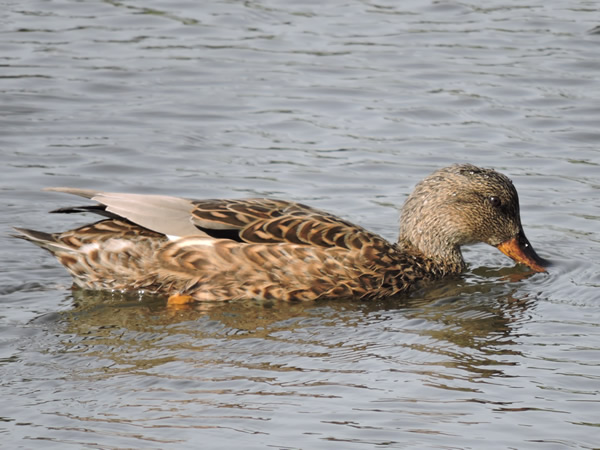 |
The female Gadwall has orange on the side of her bill and, like many female ducks, is generally mottled brown in colour. |
| | |
 |
It may look like we've made and painted a wooden duck and popped it on the water, but this gorgeous dabbler is real! It's a Wood Duck, Aix sponsa, one of the most colourful waterfowl on the continent. |
| | |
 |
The female Wood Duck is also very pretty. Wood Ducks get their common name from the fact that they prefer wooded swamps and small lakes close to trees where they can nest in cavities and holes in a tree. You may have actually noticed that in some wood people have put up large nest boxes for them. Nesting in trees offers a great protection for predators. Another interesting feature of Wood Ducks is have sharp claws which are useful for perching in trees. |
| | |
|
Flipping upside down may not seem like a pleasant way to search for food, but for dabblers it serves them just fine! |
|
| |
|
| S |
| Dereila Nature Inn Home > Lagoon Trail > Bird Life Down at the Lagoon > Ducks: The Dabblers |
| S |
|
|
|













